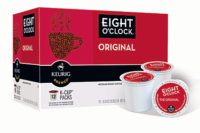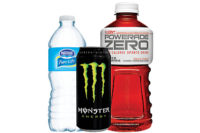The grocery store segment consists of equal parts of decline and optimism. According to a grocery store retailing study published in July 2010 by Chicago-based Mintel International Group, the grocery products market grew by just 0.6 percent in food, drug and mass merchandise outlets. This market includes bakery, dairy, deli, edible, frozen foods and drinks, general merchandise, health and beauty items, and non-edible products, but excluding alcohol beverages.
Although the grocery market reached $356.5 billion during 2009-10, the segment’s performance during the past year has been lackluster. Overall, sales were down and traditional grocery stores have lost significant market share. But, the poor performance numbers during the past year have inspired retailers to refocus their efforts, reorganize their product offerings and revisit the fundamentals of grocery retail.
A blurred frontier
“In today’s retail environment, there are a lot more players in the grocery segment, which has cut into the traditional grocery store territory,” says David Browne, senior analyst at Mintel. “Consumers have more options today than they’ve ever had when it comes to spending their grocery dollars.”
As the 2010 Mintel Grocery Store Retailing study reveals, retail channel blurring has emerged as a new reality during the 2000s, as mass merchandisers expanded beyond general merchandise into the food and drink markets, and, most recently, into the fresh food sectors.
Essentially, shoppers in the past decade have been switching to warehouse clubs and supercenters, such as Wal-Mart and Target. The Mintel Grocery Store Retailing report found that supermarkets experienced a 3.0 percent decline in consumer expenditures for at-home food in the decade between 2000 and 2010. Transversely, warehouse clubs and supercenters experienced a 10.1 percent increase in consumer expenditures for at-home food during that same time period.
In addition to the big box store format, such as Wal-Mart, or the Costco warehouse retailers, limited assortment stores, such as Aldi and Save-a-Lot also have taken a sizeable piece of the grocery pie. “Limited assortment stores are among the fastest-growing formats on a same-store basis with high single-digit sales increases,” says Jim Hertel, managing partner at Willard Bishop, Barrington, Ill. “While their market share is small nationally, they can be a real issue for grocers on a store-level basis.”
In the past five years, traditional grocery retailers also have had to contend with an emerging drug and dollar store segment. According to the Mintel study, dollar stores are taking advantage of the recession to adjust their product mix, a trend that is being made possible by the increase in name brands being offered in these stores. In fact, the research found that by 2015, sales of grocery products in drug stores and other similar channels are expected to nearly double.
“Expansion of these types of formats is being fueled by interest in selling groceries in food deserts,” Browne explains. “These places are under-served areas in cities that have a need for more access to fresh food and produce options. These areas are ideal for smaller formats, such as drug and convenience stores that sell quality grocery items.”
Any way you slice it, the grocery channel pie has become smaller for traditional formats. Wal-Mart and Target have put forth efforts to expand their grocery presence, and the entrance of drug and convenience stores into the grocery territory has picked up steam during the past five years as well.
As avenues for grocery retail continue to expand, the traditional supermarket will continue to lose its footing in the segment. According to Hertel, the varying formats have been successful at diverting trips from traditional supermarkets. “In areas where there is high competition from such big box stores, we see a loss of 10 or more trips per year for traditional supermarkets,” he explains. “And, there are even bigger losses for the grocery department. These different formats pose tremendous challenges for traditional grocery stores.”
Priced to move
As the economy slowly recovers, some lasting effects from the worldwide recession still linger. As retailers in any format can attest, consumers are more price conscious than they were a decade ago. Pricing has become a delicate topic, especially for retailers of commodities, such as grocery stores.
More than half of the respondents to a Mintel custom consumer survey noted that they do not shop as often at supermarkets because they feel they can get a better deal elsewhere. This factor has added additional stress to grocery stores that are trying to contend with big box retailers and small-sized drug and convenience outlets.
“Grocery stores have seen challenges due to cash-strapped shoppers heading to extreme value operators,” Hertel adds. “Many grocery stores have become much more promotional in order to keep sales and customer counts up.”
But, grocery stores have not gone down without a fight. According to Mintel, 2010 brought an advertising push for supermarkets. The goal was to convey everyday low pricing to consumers. As the Mintel report explains, traditional grocery store formats across the country are hard at work combating the image that they are pricier than other formats.
Today’s mantra for grocery stores is value and freshness. This message is getting across to consumers by way of a renewed focus on private label. “Store brands increase price image and margin performance,” Hertel explains. “And, store brands can build store loyalty given the right products.”
As Browne notes, the product assortment of private label brands has changed compared to what it was five years ago. “Even in stores such as Wal-Mart and Target you’re seeing a decrease in the amount of store brand offerings,” he says. “Instead, these retailers and traditional grocery stores are focused more on a finer number of quality products that offer a value to consumers. It’s not about what store has the most products, it’s about what store has the best products.”
The next chapter
Grocery stores across the country are in the process of an image cleanse while product offerings are increasing in quality, convenience and healthfulness.
In terms of the beverage aisle, which has been a significant element in grocery stores, there’s a trend re-taking the category. “Today’s focus is ‘back to the basics’,” Hertel explains. “Beverages need to be priced right, grocery stores need to make sure they have adequate stock on-hand to cover surge demand, and they need to make sure they don’t get over-assorted in categories that become staples.”
An observation of the grocery store channel today reveals a renewed dedication to “the basics.” In order to regain lost ground in the grocery segment, which consists now of big-box retailers, convenience stores and drug stores with sizable grocery offerings, traditional grocery stores are being innovative to appeal to ever-changing consumers.
“I think we’ll see somewhat smaller stores with less center-store assortment and more service department emphasis, including unique and signature offerings,” Hertel adds. BI


